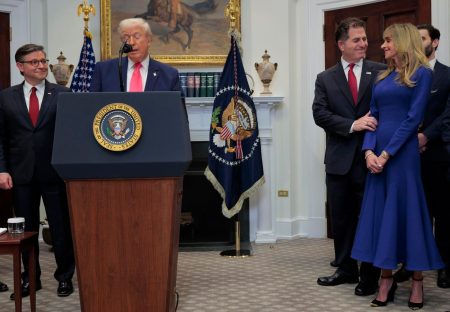At 48, Chris had everything he thought he wanted. He held a senior title at a global accounting firm, traveled the world, and earned a good salary. He had achieved his younger self’s idea of success. But lately, Chris caught himself zoning out in Zoom meetings that had become more about process than delivering a product, wondering if this was it. Fifteen, 20, maybe even more years of projects, deadlines, and polite exhaustion.
When he floated the idea of taking a six-month break at work, his colleagues looked at him as if he had asked for a one-way trip to Mars. He wasn’t running away from work. He was trying to stay in it.
Retirement used to mean the end of work. Now it may arrive right in the middle of your career.
A Workforce Rusting Out
As lifespans stretch and working lives lengthen, a growing share of professionals are quietly questioning whether it’s possible, or even healthy, to power through 40 or 50 uninterrupted years of work. The 2025 Gallup State of the Global Workplace report offers sobering data. Only 21% of employees worldwide describe themselves as engaged, the lowest in a decade. Among managers, who one would believe have a strong grip on the career ladder, engagement has fallen to just 27% globally.
In the United States, engagement dropped to nearly one in three employees (31%), the lowest point since 2013. Gallup reports that nearly six in ten workers are “quiet quitting,” and almost half (44%) report feeling “a lot of daily stress.”
The story of burnout is familiar. However, a quieter, more corrosive issue is spreading among mid-career professionals. Fast Company recently called it ‘rust-out.’ It’s the wear and tear that occurs when your work stops engaging your talents and begins draining your energy. It’s not always fatigue from overwork, but often from mounting stress, repetitive tasks, and frustration caused by increasingly meaningless organizational processes.
The Longevity Economy: Longer Life, Longer Work, And The Need For Renewal
For decades, the social contract of work followed a simple story: learn, earn, retire. But increased longevity is changing that story. Many of us expect to live into our late eighties, and for many, that means continuing to work into their seventies. The basic numbers show that the traditional career pattern of 30 years of working followed by an abrupt stop no longer fits, especially as some now suggest a sixty-year work span.
The problem isn’t just exhaustion. It’s diminishing vitality in the middle decades of work. Professionals who entered the labor force during the tech boom or the Great Recession are now in their forties and fifties. They are not old, but they are old enough to feel the limits of sheer velocity. Many, like Chris, are not looking for escape; they’re looking to recharge.
That desire is starting to surface in discussions between human resources departments and current employees as well as candidates. Research by NEXT360 Partners involving over 250 HR and CHRO professionals shows that employee interest in a midlife sabbatical or micro-retirement now ranks among the top ten benefit questions employers get from staff and job applicants. The finding highlights a clear trend: employees are no longer satisfied with just two weeks off or the promise of eventual retirement. They want breaks along the way.
When Rust-Out Becomes Risk
If workers are disengaged for years, even decades, before their final retirement, the productivity costs are staggering. Gallup estimates that lost productivity from disengaged employees drained the global economy of $438 billion in 2024 alone.
Rust-out is especially insidious in knowledge industries where creativity, collaboration, and problem-solving are the real currencies of value. A disengaged engineer designs fewer breakthroughs. A manager running on autopilot develops fewer people. A midlife professional who feels stuck in constant meetings is less likely to innovate, mentor, or lead.
In that sense, the epidemic of disengagement isn’t just a workplace morale issue; it’s an early warning sign of systemic fatigue in a world expected to work longer than ever. That’s why the next step in workforce longevity won’t simply be about extending careers over decades or managing a multigenerational workforce; it will be about redesigning the rhythms within them.
The Rise Of The Midlife Sabbatical And Micro-Retirement
Sabbaticals were mainly for professors or tech executives between startups. However, an increased lifespan may be turning that luxury into a necessity for others who work much longer than previous generations. Midlife sabbaticals, micro-retirements, or even career gap years are increasingly viewed by many as pauses to recharge, reskill, and rediscover purpose.
Imagine a lawyer taking six months to study tax policy before returning to practice. Or a healthcare administrator stepping away for a year to complete a data-science certificate. Or a senior manager taking a micro-retirement to travel, reflect, and reset priorities before re-entering the leadership ranks.
Previous generations would have viewed these breaks from work as an indulgence. Today, as work lives extend well beyond what life expectancy was a century ago, a midlife sabbatical acts as a pressure valve, a classroom, and even a health intervention to protect against burnout.
Why Employers Should Care
The longevity dividend of living longer is only valuable if institutions can adapt. Employers aiming to keep experienced professionals productive over extended careers will need to redesign their career development paths and reconsider many daily work processes that were created for a different era of work.
A midlife gap year, micro-retirement, or any other term used, can no longer be seen as simply attrition. Increasingly, it will be viewed as both a recruitment and retention strategy. Companies already losing top talent to burnout or disengagement may find that approved sabbaticals cost less than the expenses related to turnover, recruitment, and retraining.
Some proactive companies are already experimenting with new strategies. Consulting firms, law firms, and multinational corporations are beginning to include sabbaticals in their talent management initiatives. Deloitte, for example, offers two options: employees can take a one-month unpaid leave for any reason, or a three to six-month sabbatical for personal or professional development. Those who choose the longer period receive 40% of their base salary.
Of course, not everyone will have the opportunity to take a leave of absence. Many workers, particularly those in construction, hospitality, healthcare, logistics, and hourly roles often lack the flexibility or financial resources to take extended leave. For now, the option remains a growing possibility mainly for knowledge workers and professionals.
The Financial & Retirement Industry’s Next Challenge
For financial advisors and retirement benefits providers, this trend opens a new frontier in planning. Traditional financial models assume steady income followed by a single retirement at the end of life. However, if professionals start taking intentional pauses during midlife, the industry will need to develop financial products for mid-career breaks that allow safe, strategic withdrawals of savings without risking long-term security.
Employers might begin offering ‘sabbatical accounts’ as part of compensation, similar to a 401(k) or a 529 plan, but designated for mid-career breaks. Advisors could help clients plan for multiple retirements: one in midlife for transition and reinvention, and another in later years.
A Cultural Shift In The Longevity Economy
Ultimately, the success of midlife sabbaticals will depend less on company policies than on cultural narrative. For generations, stepping away from work midcareer was seen as risky or irresponsible. With much longer lives, that cultural stigma is fading. The pandemic forced millions to rethink the importance of well-being, reevaluate what truly matters, and accept nonlinear careers as not only possible, but normal.
If the 20th century’s major workplace innovation was retirement, freeing older adults from lifelong labor, then in the 21st century’s longevity economy, taking thoughtful, planned pauses might become the next significant cultural shift in the future of work.
Read the full article here








